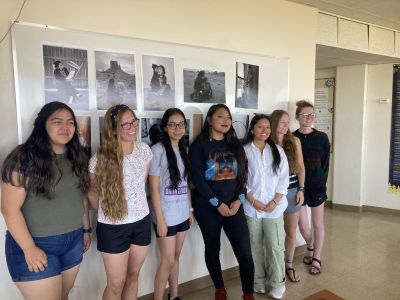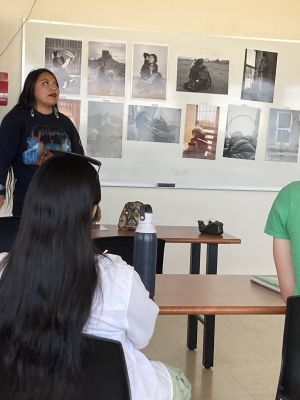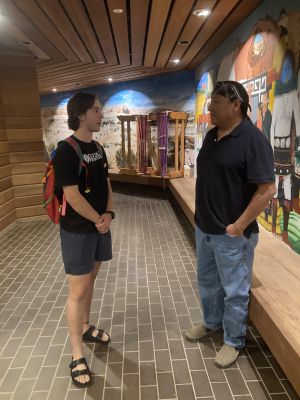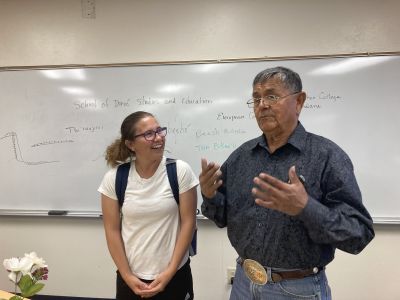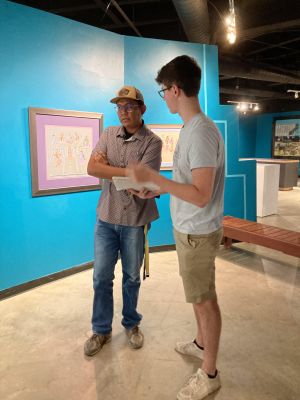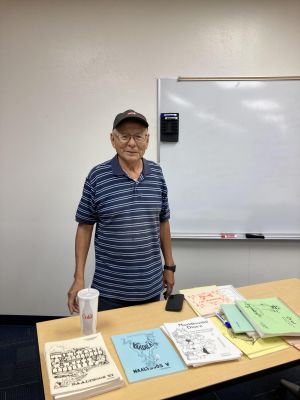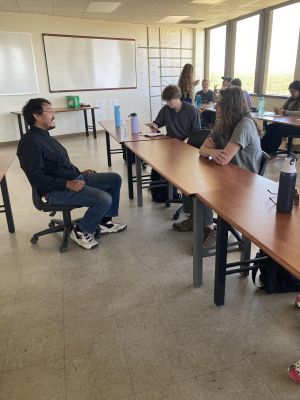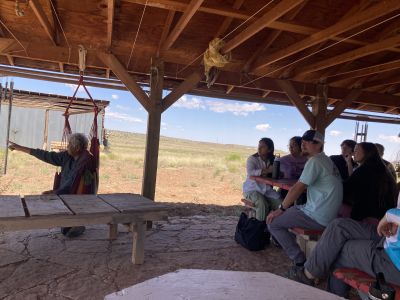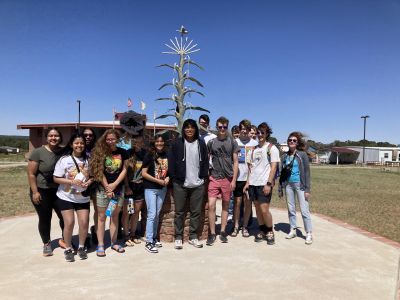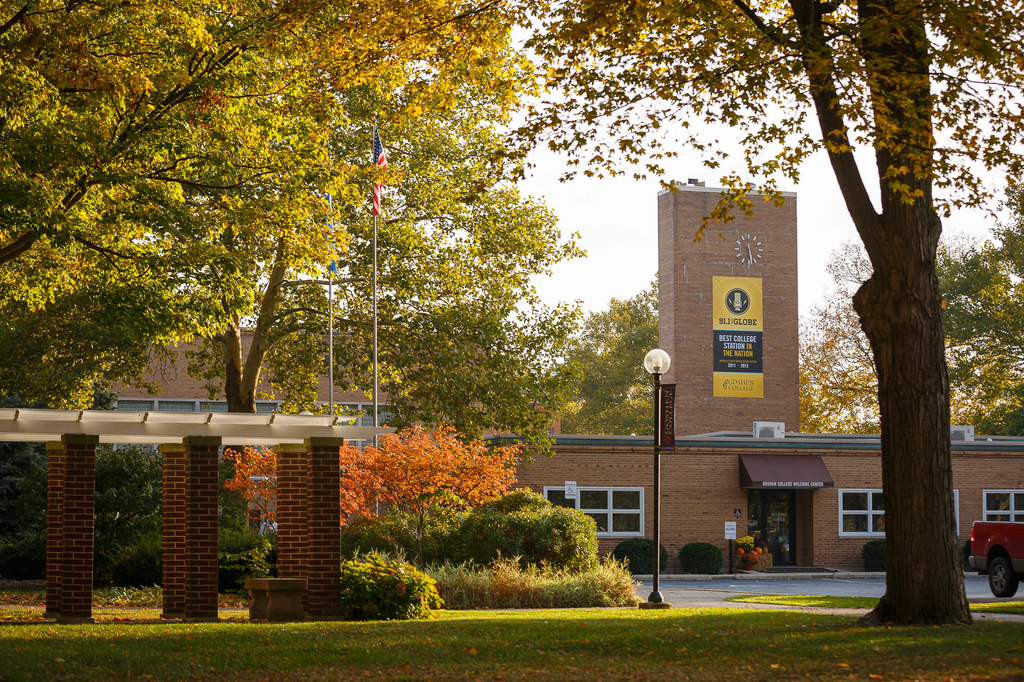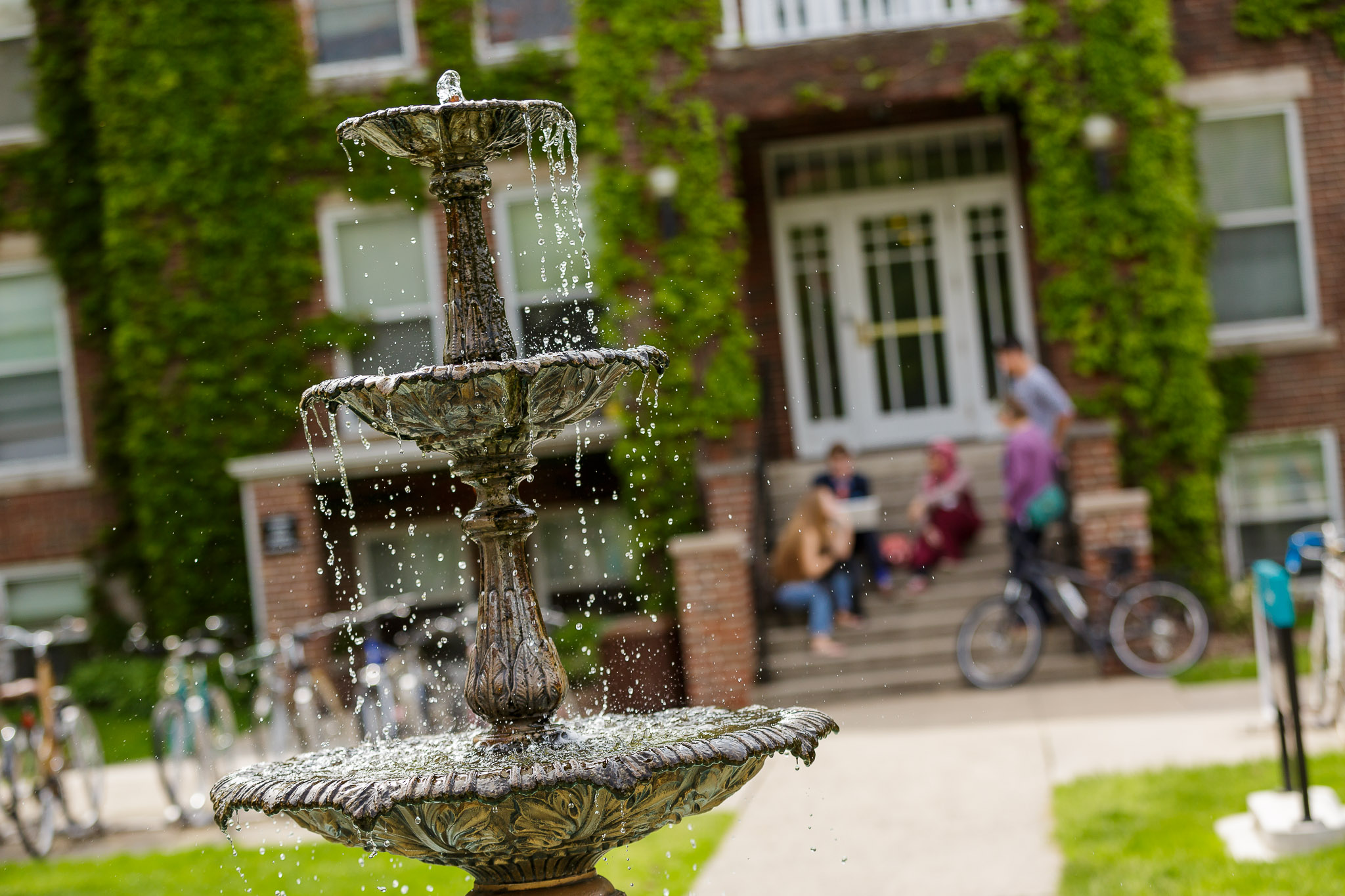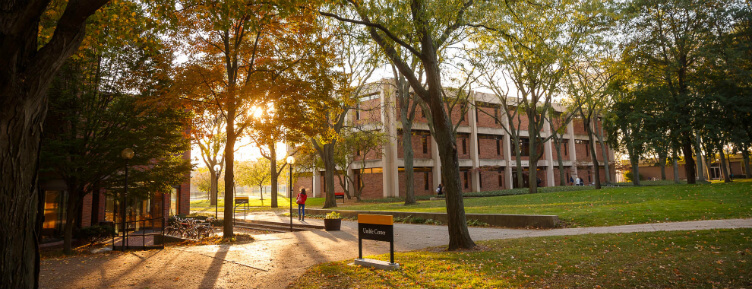Virginia Jimenez shares her reflections on an inspiring presentation by a photography student at Diné College:
At Diné College we met various Navajo people who shared their culture with us — one of them was a photography student, Candace Harrison, who is on her way to graduating this December. During our time with her, she told us about her photography, her childhood growing up with her grandparents, how motherhood has added to her life and view of their culture, and how she uses her camera to capture her culture and beautiful moments with her children and her grandparents as well.
Becoming a mother, she realized what a huge responsibility it is to provide for the needs of someone other than herself, as well as passing down her cultural values.
As her kids are growing up with her grandparents, she remembers herself being raised by those same grandparents. Since her parents were not present during her childhood, she feels really strongly about being there for her own kids. I wonder if the reason why she is taking her role so seriously is because Navajo culture is matrilineal and this was probably passed down to her by her grandmother.
When she first came in, I got such a good vibe from her and continued to feel that energy from her as she shared her story and was so open to answering all of our questions. She seemed so genuine and passionate about both being a mother and her work as a professional photographer.
Her photography includes both traditional clothing and important aspects of the culture like the cradle board. The cradle board, for example, has a piece of wood in an arc shape which goes over the child’s head. This represents the rainbow which is believed to protect the child from evil spirits. The strings that hold the baby to the board are in a crisscross pattern that represents lightening which is a significant part of spirituality in Navajo culture. The context of many photos is her grandparent’s traditional home as well as sacred places like Monument Valley and include important elders as well.
Candace also shows her own personal style of dress outside of tradition while still preserving her identity as a Navajo woman. Her photography has gotten recognition and been chosen for magazine covers. Aside from receiving professional recognition for her work, she has been touched by the love she has received from all around the world for one particular photograph. She seemed to highly value the positive feedback she received for this photo more than any other. The reason why I think she valued this feedback more is because she not only depicted her Navajo identity but also included her own personal touch.
What I enjoyed most about her story was her willingness and determination to learn and pass down her culture to her children. She has given them indigenous names and is currently introducing them to their Navajo language which she understands but is learning to speak along with them. Since many aspects of Diné culture are in a state of decline, Candace has taken it upon herself to learn and teach her children the traditional ways of Navajo. She has also taken on weaving herself, learning on her own and helping others with their weaving projects.
Weaving is an important part of Navajo culture and has been passed down for centuries. Candace was not taught this but I admire that she has the initiative to learn on her own. She is a 26-year-old young woman who sees the value and importance of her culture and wants to keep it alive through herself and her family as well as presenting it to the world through her photography.
As another young woman of color, I also see the significance of keeping my own Mexican culture alive through myself. Although I already knew this, seeing another young woman do the same was very inspiring to say the least.
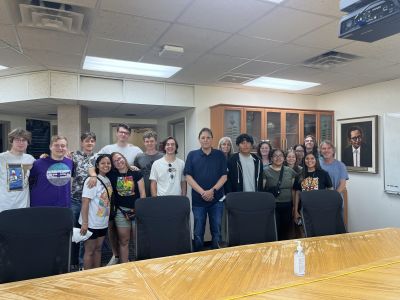
Dine College President Charles M. Roessel introduces us to Dine College and its vision for educating Navajo People
